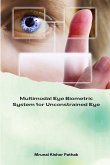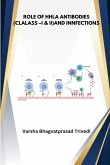Eye and hand movements can be made independent and in isolation of each other. Yet, a tight coordination between the eyes and hands are observed, particularly in those tasks that demand, manipulating objects in external space. For example, when subjects were asked to do a simple day to day activity of making sandwiches, the eyes were always found to land on the intended target of the hand before the hand initiates the movement (Johansson et al., 2001; Land and Hayhoe, 2001; Hayhoe et al., 2003; Hayhoe and Ballard, 2005). This tight coupling between eye and hand is a consequence of having a retina that has maximum visual acuity at the centre or the fovea, where there is a maximum concentration of photoreceptors. To overcome this limitation, the eye is rapidly rotated in the orbit, to redirect the high acuity fovea to specific regions in visual periphery, so that high resolution information can be obtained. The rapid eye movement that shifts the fovea to the region of interest is called a saccadic eye movement. To precisely manipulate a knife, to cut the bread or spread jam on a slice of bread, high acuity visual information regarding the position of these objects are needed. Hence a tight coupling between the saccadic eye and hand movements is always seen when subjects perform such activities. Such a tight coupling between the eye and hand is also crucial for the survival of an arboreal primate like a monkey which is swinging from one branch to the other, so that the eyes are locked to the target of the intended hand movement. Thus eye-hand coordination maybe crucial for survival, hence favored by natural selection thereby facilitating complex actions in peripersonal space among primates, including humans.
Hinweis: Dieser Artikel kann nur an eine deutsche Lieferadresse ausgeliefert werden.
Hinweis: Dieser Artikel kann nur an eine deutsche Lieferadresse ausgeliefert werden.








